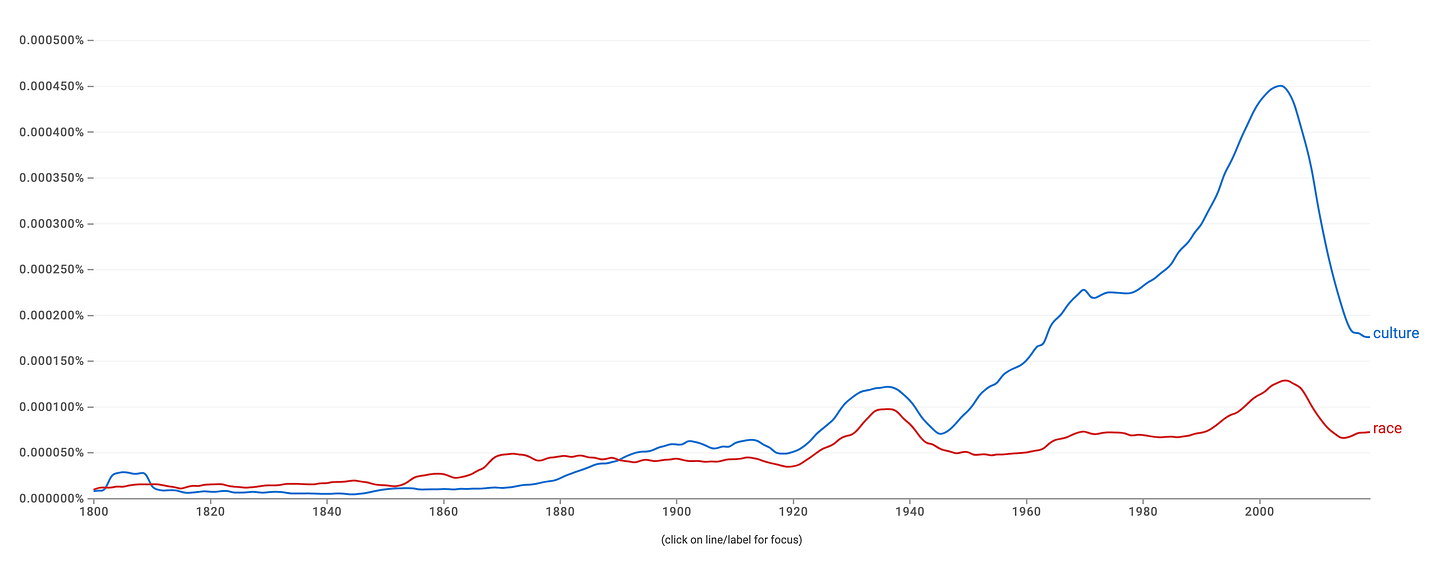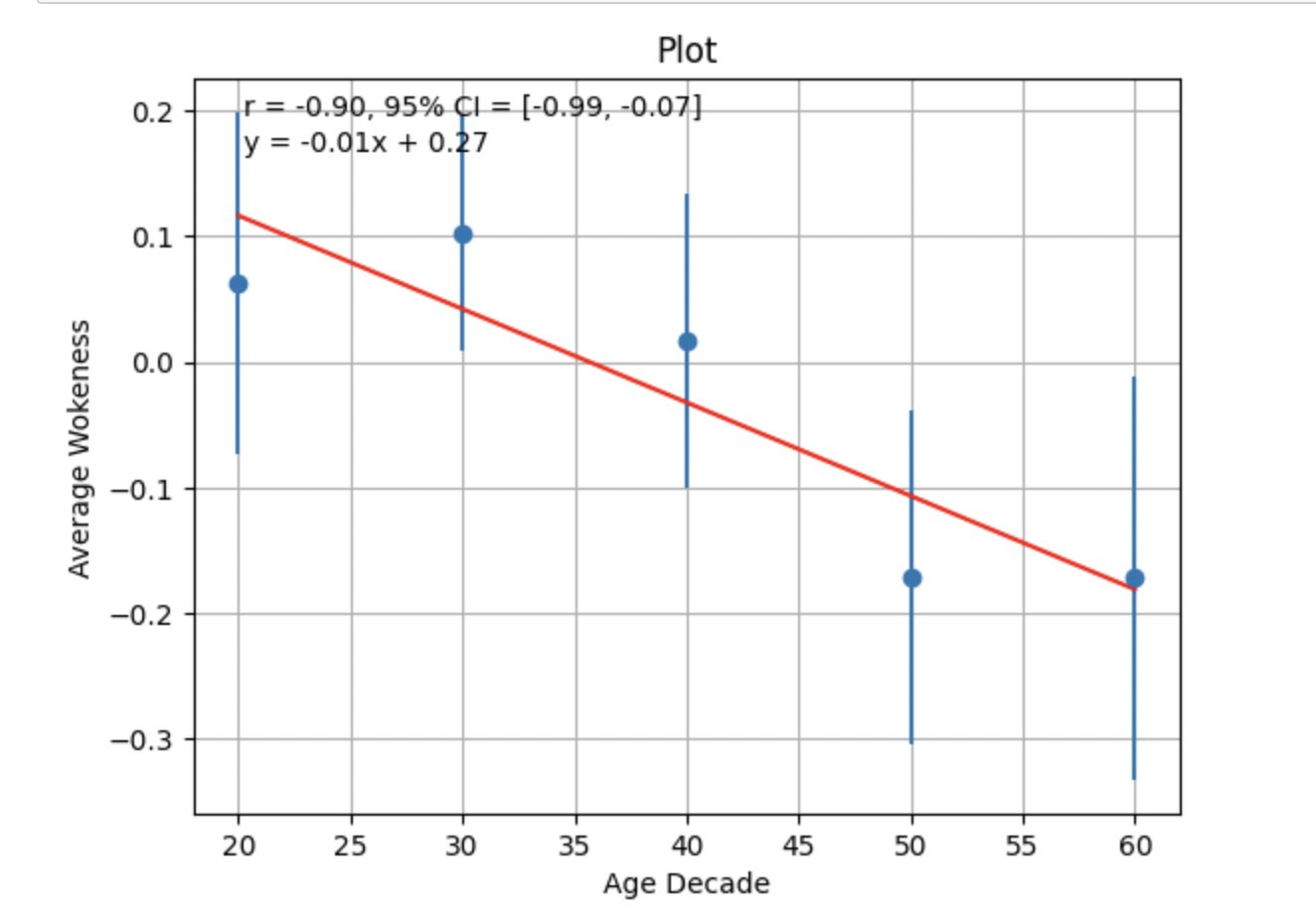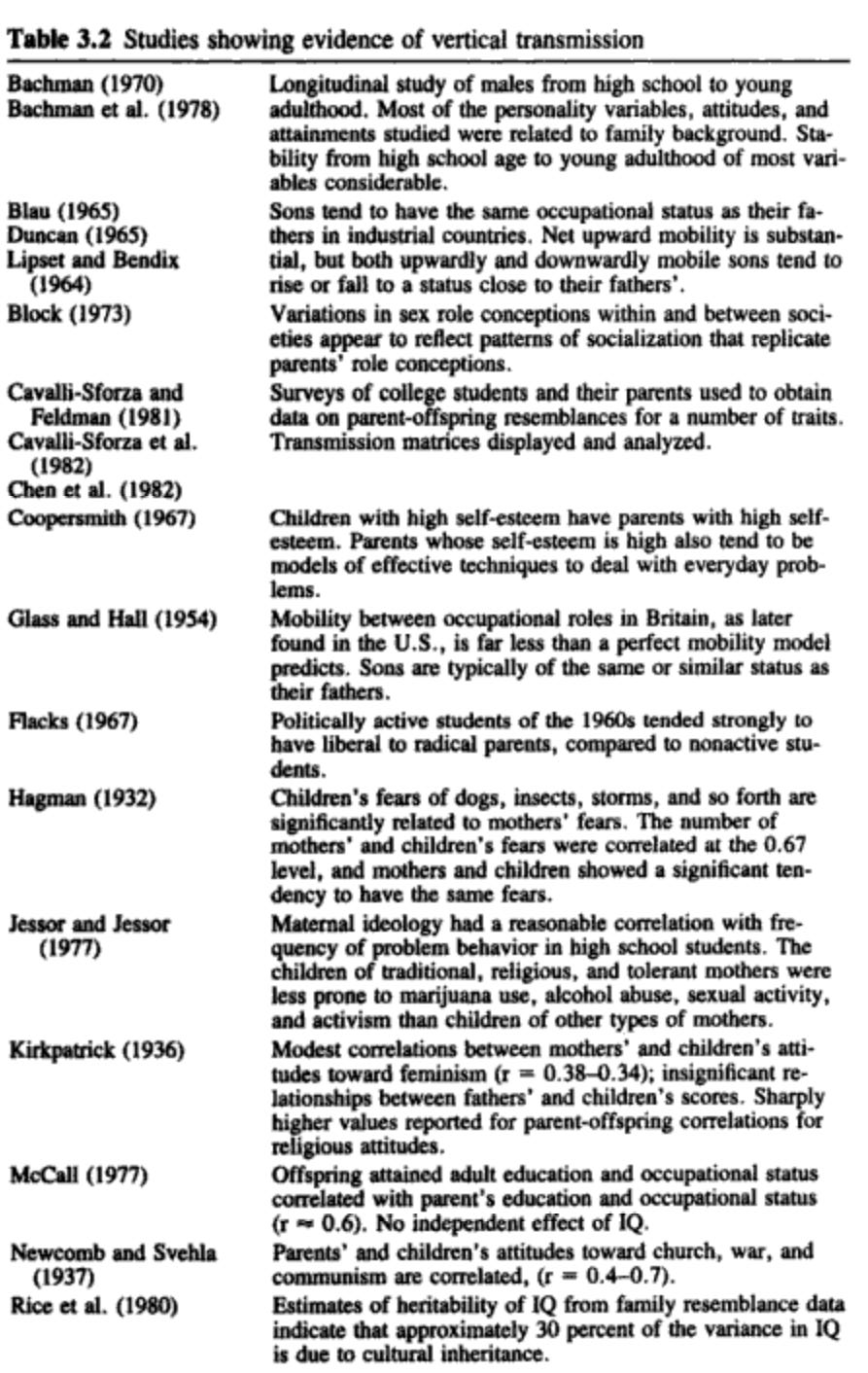The rise and fall of "cultural evolution"
Why cultural evolution is fake
Too many people give credit to the idea of “cultural evolution.” In this article, I question the validity of the concept of “cultural evolution”, starting with its historical origins. It has mostly served as a psuedo-scientific cudgel to advance the aims of blank-slatists. A tour of its first models reveals rampant fallacious reasoning and bad assumptions. The combination of this history, the bad assumptions baked into the concept, and the incoherency of the word “culture” lead me to conclude that the term and its baggage should be abandoned for a better alternative.
The creation of “culture”
Before “cultural evolution” was just “culture.”
Kevin MacDonald recounts the rise of “culture” as a part of Boasian anthropology. “Culture” was used to obscure race and biology. Before, differences between populations were thought to be related, at least in part, to evolved race differences. After the invention of “culture”, all differences were ascribed to “culture”.
As now, it was vague as to what created different “cultures”, but the implicit assumption of blank slatists always seems to be something like information, random chance, and Free Will. They are not specific on what “culture” is, but they often speak as if interventions like education, simply deciding to employ new organizational practices, and public information campaigns can transform “culture.”
You can see above that race was dominant over culture from 1820 to 1890. After that, until about 1950 culture came to slightly dominate. Then, in the 1950s and 1960s, “culture” exploded and came to massively dominate over race.
This is the same story that has been told before, the one that ultimately comes down to mutational load, except it is clear here that “culture” is on the side of mutational load and blank-slatism.
Cultural evolution: culture infiltrates biology during the sociobiology debate
Biology stayed based an ignored culture until the 1980s. It could do this because it stayed away from social behavior; culture had infested sociology and anthropology, absolutely destroying what scientific rigor they had in the 19th century.
Because they were non-scientific, in 1975 E.O. Wilson suggested a revival of the biological science of society called sociobiology. This enraged the blank-slatists.
They formed a group at Harvard called the Sociobiology Study Group. This group was run by figures like Richard Lewontin, creator of Lewontin’s fallacy, and Stephen Jay Gould, a fraudster who lied about Morton’s skulls being fake, among other things.
Lewontin used his New York Times connections to manufacture controversy, and the group published several heavy-handed letters denouncing the immorality of sociobiology. Needless to say, this only backfired.
The blank-slatists needed another plan. So they invented the idea of cultural evolution in biology. The term “cultural evolution” was already floating around in the blank-slatist pseudo-sciences, but biologists never took it seriously because it was vague, fake, and non-mathematical, like most “cultural evolution” stuff today.
In 1976, Richard Dawkins published his verbal tract against group selection titled The Selfish Gene. In it, he sowed the seeds of cultural evolution in biology, giving it a unit of evolution known as the “meme.” blank-slatists began working to formalize this idea mathematically.
In response, E.O. Wilson set to work with Charles Lumsden, creating their own mathematical models ultimately culminating in the book Genes, Mind, and Culture, which defined the “culturgen” as the unit of culture. They attempted to show that genes keep “culture” on leash and that “the tabula rasa is unlikely”. Sadly, however, they did not go far enough, and still allowed for some form of gene-independent “cultural evolution.” It’s clear even their idea of “culture” is a big spook: “a relatively homogeneous set of artifacts, behaviors, or mentifacts.” What even is a mentifact?
But even this was too much for blank-slatists, so they finally struck back with Cultural Transmission and Evolution. It was co-authored by a man named Cavalli-Sforza.
According to an article published in The Economist, the work of Cavalli-Sforza “challenges the assumption that there are significant genetic differences between human races, and indeed, the idea that 'race' has any useful biological meaning at all”. The book illustrates both the problems of constructing a general “hereditary tree” for the entire human race, and some mechanisms and data analysis methods to greatly reduce these problems, thus constructing a fascinating hypothesis of the recent 150,000 years of human expansion, migration, and human diversity formation. In the book Cavalli-Sforza asserts that Europeans are, in their ancestry, about two-thirds Asian and one-third African. This is anti-white, of course, because Asians and Africans exist but not Europeans in this formulation. Europeans just become a combination of races that actually exist.
In their book, they literally just commit the sociologist’s fallacy and define culture as everything. For example, they claim that people get more “culture” from their parents than others. They have to say this so that there is any variance in culture. If cultural transmission is uniform, everyone will be exposed to the same culturegens and there will be no behavioral variance due to culture. So cultural transmission becomes heterogenous in the exact same way genetic transmission is. What is the evidence against the default hypothesis that similarities to parents are genetically transmitted as opposed to “culturally” in a world of massive free information flow?
A more mundane example, analyzed in some detail, is the transmission and random-sampling drift of Italian surnames. The methods for estimating model parameters are well illustrated by data on the religious, sexual, and other preferences of Stanford University students and their parents. If nothing else, this example shows surprisingly high correlations between preferences of parents and children, illustrating that even in our modern, media-dominated society, social transmission is highly structured
Lol. This is the sociologist's fallacy.
Decades of twin studies have evaporated the blank-slatist claim of vertical cultural transmission inducing large amounts of trait variance, by the way. Shared environment explains hardly any differences in various behaviors. Instead, heritability is usually high and after that unshared environment, which could contain horizontal “cultural” transmission (but probably doesn’t). This discredits models that focus heavily on “vertical transmission.”
Finally we get to the 1985 Boyd-Richerson dual inheritance model. First, they are both Californian; the first is an anthropologist, and the second is an environmental scientist. Based on data concerning leftist by field, it is likely they are both blank-slatists.
They begin their argument with defining culture. First, they note the existence of a 1952 book showing there are no less than 164 definitions of culture, with 3 major categories. These categories are the genetic dogwhistle (“save Western Culture (white people)”), mass phenotype (“it is Asian culture to be good at the SAT”) and information (“Cooking is a cultural adaptation to overcome food poisoning”).
The authors go with the informatic definition: “Culture is information that affects phenotypes, acquired from others”.
This is great, this is the same as my definition of memetics minus the arbitrary “acquired from others” requirement. Certainly the authors will not commit the sociologist’s fallacy and will instead consider informatics as a variance component that explains some proportion of trait variation in a population, right?
Wrong! Next they motivate their models with the sociologist’s fallacy.
First they establish that people can learn! This is trivial. This doesn’t say how much of X trait variance is due to informatic variance. We can call treating this as binary as the “infinitesimal effect size fallacy.” This is a fallacy where blank slatists (or others) say some cause is really important because they found a non-null effect size. It goes something like this:
“We found an effect size where increasing education causes liberalization. Therefore, increasing education has significant consequences on political behavior. It explains the increase in liberalism. No bigoted genetic theories needed!”
When the reality is with this paper, after controlling for stuff like income, they found very small effects of attending college on leftism, in between 0.1 and 0.2 SDs. This means if in 1955 nobody went to college, and then everyone went in 2020, we would expect leftism to increase by 0.1 to 0.2 SDs. How much of the generational increase in leftism can this explain? Well ... If you use the authoritarian metric, which is not what leftism is, this would explain 6% of the generational gap. If you use the better race metric, increasing education would increase leftism by about 0.01 SD over the last 40 years. But there is a 0.3 SD generation gap to explain. So increases in college education can explain about 3% of the increase in leftism over the last 2 generations!
Back to culture. Points 2 and 3 have been definitively debunked by twin study research. None of the studies control for genetics, so they fail to overturn the default hypothesis that parent-child similarity is genetic.
In some cases it seems like it is simply assumed that political similarities can’t be inherited, even though political views are over 70% heritable under some estimates. In other cases, the author claims all environmental variance is cultural variance, but this is fallacious. Remember culture is defined here as informatics. The Rice et al. citation is an example of this. How can informatics even influence IQ? That makes about as much sense as informatics influencing height.
After this they basically just paste population-genetics models but instead of genes you have, I kid you not, “cultural alleles.” There is really nothing of significance here because all of this is built on the infinitesimal effect size fallacy and the sociologist’s fallacy. These models have never been verified because no one can measure a cultural allele, because no one knows where it is or what it looks like. In other words, their models concern molecular informatics and not estimating how much variance informatics explain. Molecular informatics does not exist like molecular genetics does.
The three problems with “cultural evolution”
We can conclude that there are three problems with “cultural evolution”. The first is that it is used to distract from genetics when the empirical fact is that heritability is much higher in general than memetability. Cultural evolutionists ignore the need to measure memetability while adopting unverified assumptions about informatic spread that weakly imply memetability will be high.
The second problem is disinterest in verifying their informatic assumptions. One of these is the assumption of low informatic bias. Informatic bias is the extent to which genes select for fitness maximizing information efficiently. In general, the higher the informatic bias the lower the memetability (variance of a trait that is due to variance of information). I have attempted to discredit the idea of low informatic bias by demonstrating empirically the low guillibility of people in general.
Another assumption is the assumption of time-consuming informatic transmission. The more time-consuming the transmission, the more vertical transmission will dominate and the more informatic heterogeneity between families will dominate. Basically, when it’s more time-consuming, people are exposed to less information which will increase informatic variance due to exposure variance. Low shared-environmentability refutes the assumption of time-consuming informatic transmission. Informatic transmission should be rapid and efficient, meaning everyone gets exposed to the same genes-exogenous set of behavioral information throughout their life.
In general, it is these assumptions that warrant the title “evolution.” If informatic transmission is rapid and bias is high, what you have is no variance of informatic exposure and, if there is variance of informatics at all, there is an extremely high gene-informatics correlation, because differences in important hard-coded biases determine variant information acceptanc. This isn’t cultural “evolution”, this is just transmission where the information people have is strongly determined by their genetics. Selection on information will also be selection on genetics, in other words, which is just evolution.
The third problem is the vagueness of the word “culture.” We are lucky when we are dealing with a mathematical text that is defining culture as informatics, at least mentioning variance components and explicitly defining their assumptions about informational transmission. Most work in “cultural evolution” studies conflates the phenotypic notion and the informatic notion of culture, letting “culture” be this blurry edge between stuff people just do because they’re vibing, and the stuff they’ve learned explicitly.
No more of this. For these reasons, I urge truth-seeking scientists to consider “cultural evolution” to be fake. The term is loaded with the three issues we have just discussed. Instead, we should speak of informatic transmission. This abolishes the “culture” slight of hand, forces clarity which makes it obvious that we need to understand memetability as a component of phenotypic variance, and leaves conceptual room for high informatic bias and easy informatic transmission, which seem to be true based on the data.












The best case for cultural evolution is from people like Joseph Henrich. There's lots of evidence for cultural evolution. Check out his books: "The Secret of Our Success" and "The WEIRDest People in the World". His approach is also compatible with evolutionary psychology (the Santa Barbara variety, not the blank slate variety) and behavioral genetics (although behavioral genetics is only tangentially relevant to his explanatory targets).
"Biology stayed based an ignored culture until the 1980s."?????????